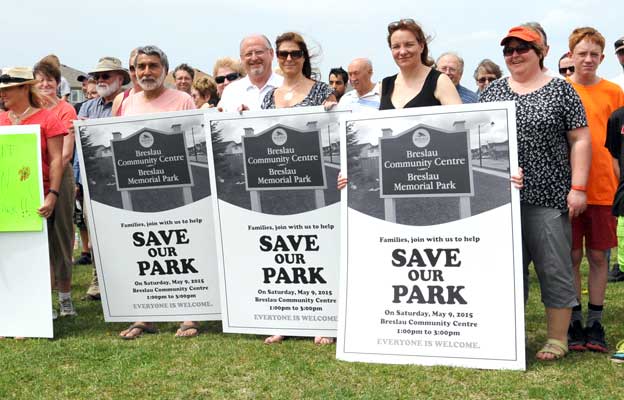The seeds are sprouting and the flowers are blooming at the new Gale Presbyterian Church community garden in Elmira.
![Gil Langerak and the Gale Presbyterian Church launched a new community garden this spring at their Elmira location on Barnswallow Drive.[Scott Barber / The Observer]](https://www.observerxtra.com/content/images/wp-content/uploads/2015/06/post_news_garden.jpg)
Spearheaded by local gardening enthusiast Gil Langerak, members of the church and neighbouring homeowners built an organized set of uniform gardens on the south end of Gale’s Barnswallow Drive property last month.
Currently, there are a dozen four-by-eight-foot plots, each surrounded and separated by a couple feet of mulch, which also helps ward off mud in high traffic areas.
It’s a community garden like any other – Langerak spent many years with the Woolwich Community Garden at Bristow Park, now at Victoria Glen – but members have put in a great deal of planning, and experience, to make the most out of their space.
“We are using what is called the square-foot gardening method,” Langerak said. “It was pioneered by Mel Bartholomew who had a public broadcasting program in the States and I got acquainted with it 30 years ago when my wife bought me his book for a gift and I have been sort of hooked on it ever since.”
The method sees gardeners divide their planting area into small square spaces – often by just one foot – to assist them in planning and maximizing the density while ensuring each plant has the room it needs to grow.
The idea is to create simple, orderly vegetable gardens, and it really appeals to Langerak.
“What I like about it is that it’s controllable,” he said. “So in other words, unlike with a community garden I was with back in Hamilton where they just plowed the land and put some strings out and you have the euphoria of May when everyone comes out and plants and the soil is nice and fluffy, but people walk around and the soil gets compressed and then come June or July people start going away on vacation and the weeds take over and it starts to look messy. So this on the other hand, is a nice controlled system, and being within a box, if something gets abandoned, it’s easy to fix, you just plant what you still can in the season and you can put other mechanisms like hoops and covers over a contained space like this.”
Mulch pathways in between each garden make sure no one is walking through anyone’s planting area, and it provides a nice aesthetic, Langerak added. And the spaces are only four feet in width so that you can reach the middle to plant or pull weeds from either side of the garden.
Bartholomew’s book also provides a helpful list of how much space each vegetable needs to grow. Tomatoes plants, for example, require a full square foot to themselves, where as beans only need three square inches of room per plant.
There are 12 plots so far, including two that are still open and one that is designated for the Woolwich Community Services food bank. The group is eager to add another row in the coming weeks and ask anyone interested to e-mail glangerak@gmail.com.
As for what you should grow in your garden, Langerak keeps it simple.
“I always tell people, grow what you like to eat.”








